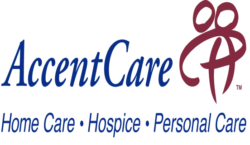June 28, 2017

A Seismic Home Care Shift is Redefining Post-Acute Care
Earthquakes occur when pent-up pressures release along geological fault lines. These seismic events reconfigure adjacent landscapes as energy waves distribute from the quake’s epicenter.
U.S. healthcare is rife with fault lines. High costs and poor outcomes create seismic market pressure for improved performance. Vulnerable incumbents are scrambling to remain competitive.
In contrast, visionary companies recognize fault lines. As innovators, they increase market pressure by delivering better, more convenient healthcare at lower prices. In the process, they help reconfigure the healthcare industry’s post-reform landscape.
Home healthcare operates along a major fault line within the U.S. healthcare system. “Mom and pop” providers dominate the highly-fragmented home care sector. They tend to operate with unacceptable performance variation and inconsistent patient care quality. The practice of “churning care” to optimize reimbursement is fairly common.
An earthquake, building for some time, will disrupt this vulnerable terrain. Responding to new payment models, readmission penalties and greater quality transparency, innovative healthcare companies are integrating, redefining and revitalizing home care delivery.

For example, in April, 2017, Baylor Scott & White Health (“BSWH”), the largest non-profit health system in Texas, and AccentCare, a national leader in home care services, announced an agreement to establish a new home health joint venture to service the large Texas marketplace. The joint venture will clinically integrate existing agencies (four from BSWH and six from AccentCare) to cover 3,000 – 4,000 patients and is expected to be completed in the summer of 2017. This initiative is part of a broader national trend toward greater post-acute care coordination within integrated delivery systems.
Seismic events disperse powerful energy. The seismic shift now underway in home care will accelerate the sector’s consolidation while enhancing its performance. The post-reform landscape will feature integrated post-acute care services with better outcomes, lower total costs, reduced waste and more satisfied customers.
The Current Home Care Landscape: In a Critical State
According to the latest data available from CMS, in 2015 there were approximately 12,350 Medicare-certified home health agencies in the U.S. serving roughly 3.5 million people per year.[1] The sector is highly fragmented. Around 80% of the total number of agencies are for-profit. The ten largest providers comprise roughly 20% of the market[2]. The vast majority of home care providers are small “mom and pop” businesses with roughly 95% of the agencies generating annual revenue of less than $5 million.
Fraud is rampant. The Department of Health and Human Services is investigating over 500 agencies and 4,500 physicians for potential fraudulent transactions. Abusers bill for episodes unconnected to any visit with a supervisory physician, hospital or nursing home stay. They also diagnose inappropriately and submit claims from multiple agencies or for multiple readmissions in a short time period.[3]
Home health is among the fastest growing sectors in healthcare.[4] With a need for greater accountability and improved performance, current business practices are vulnerable to disruption and rationalization. Larger, more efficient enterprises are forcing realignment around value-based care delivery.
Home health and hospice M&A trends over the last five years illustrate this shift. Private equity and strategic capital see opportunities to invest in these two highly fragmented sectors, both of which are ripe for consolidation.
Some recent notable transactions include:
- AccentCare’s acquisition of Mississippi’s largest home health provider, Sta-Home Home Health and Hospice;[5]
- Blue Wolf Capital Partner’s strategic investment in Michigan-based Great Lakes Caring Home Health and Hospice, one of the nation’s largest providers of in-home health services;[6]
- Kentucky-based Almost Family’s acquisition of Tennessee-based Community Health System’s Home Health and Hospice business;[7]
- Louisiana-based LHC Group’s home health and hospice joint venture with LifePoint Health
- The recent acquisition of Georgia-based PSA Healthcare by Bain Capital Private Equity’s new affiliate Epic Health.[8] (In March, 2017, the combined entity was rebranded as Aveeana Healthcare.)
Larger home health providers, many of which are publicly-traded, are growing through internal expansions and acquisitions. They also actively seek referral relationships with physician groups and joint venture partnerships with health systems.
Collaboration Models for Home Health Providers and Health Systems

Health systems understand that integrating post-acute care into coordinated care delivery is essential for long-term success. Enhancements in technology and improved care services make home health an increasingly attractive setting for cost-effective, high-quality care delivery.
Historically, health systems have not actively scrutinized quality, outcomes or readmission rates when making their discharge decisions. This is changing. Value-based payments models emphasize better outcomes and reduced costs. This requires health systems to identify more reliable partners for post-acute care services.
The shift to tighter alignment between health systems and home health providers is occurring in the following two stages:
- First generation collaboration models create preferred-provider arrangements, selecting a handful of more capable home health agencies to which they discharge patients. This approach enhances care transitions, facilitates care coordination and reduces readmissions.
- Second generation models establish formal partnerships through acquisitions and joint ventures. Examples include the BSWH/AccentCare, Almost Family/Community Health and LHC Group/LifePoint partnerships. Shared governance drives high-level strategic decisions related to growth, capital investment (such as in new technology) and branding. Tighter alignment increases risk-sharing and accountability for managing total care costs and overall performance.
Accentuating the Positive: The AccentCare Story
Founded in 1999, Dallas-based AccentCare is a national leader in post-acute care delivery. The company is representative of the new generation of post-acute providers that differentiates its brand and product offerings through superior outcomes, efficiency, performance consistency and customer experience.
After a successful tenure at OptumHealth Collaborative Care, CEO Stephan Rodgers joined the firm in July 2012 because he recognized the potential for well-run home health companies to deliver value to the broader healthcare delivery ecosystem. As Rodgers observes,
“We saw home care as a business in need of fundamental reform. Yet, we believe it has the potential to be an integral part of overall care delivery because its principle job is to take care of the sickest people in the country.”
This includes the homebound and chronically ill as well as patients transitioning to hospice care.

Today, AccentCare offers a range of services from personal and non-medical care to skilled nursing, rehabilitation, hospice and care management. The firm has nearly 20,000 employees and 140+ locations across 11 states serving almost 90,000 patients. With over $500 million in annual revenue, AccentCare is the nation’s 3rd largest personal care attendant business and the 6th largest home health business. The company consistently ranks in the highest tier of providers for its superior care quality as demonstrated by Medicare Star Ratings data.
AccentCare’s competitive advantage rests on four essential pillars: (i)Scale, (ii) Partnerships, (iii) Values and (iv) Culture.
As Rogers puts it, “Size matters.” To succeed, AccentCare must be a major presence in the markets it serves. Size and density in a particular market helps AccentCare secure referrals, generate revenue, and develop deeper relationships with health systems, hospitals and physician groups.
Those relationships are important to AccentCare because, as Rodgers notes, “We’re sub-optimized if we’re not in a partnership. The present reality is that post-acute care is not integrated into the care delivery continuum.” AccentCare inserts itself into that continuum by managing post-acute care transitions into cohesive home care service delivery.
As an organization, the firm emphasizes and lives by its values and culture. Star ratings and other public performance measures are top-of-mind for health system partners and consumers. AccentCare achieves superior performance scores by operating a values-based business with a culture that encourages empathy, learning, and customer-focus. Rodgers says, “Culture is always the best indicator of future performance.”
AccentCare is unique among post-acute care providers in that it serves as a conveyor of Model 2 bundled payments. It invests heavily in core and strategic operating platforms to improve its value for partners and customers. It also continues to expand its offerings through new programs such as population management and specialty care, and develops its own evidence-based clinically-driven care models.
This emphasis on customer focus and innovation gives AccentCare the ability to develop customized solutions for its partners. For example, AccentCare helped Oregon-based Asante Health System lower its 30-day re-hospital to 5% compared to the 12.5% national rate. In addition, after taking over the Asante Home Health agency, AccentCare refined the agency’s core operations and generated almost $2.4 million in net income improvement over a six-year period from 2008-2014.
The joint venture agreement with BSWH evolved over time. Initially, AccentCare provided home care services to both Scott & White Health and Baylor before their merger. Following Scott & White’s 2013 merger with Baylor Health, AccentCare built relationships with the new leadership team. As part of BSWH’s quality alliance of preferred providers, AccentCare established a track record for innovation, performance and partnership. It also developed a powerful data-driven understanding of the health system’s needs.
Historically, the Baylor board promoted joint-venture partnerships to advance its delivery platform. Once the combined health system was up-and-running, the new BSWH Board encouraged discussions with AccentCare.
Their new partnership incorporates a joint operating committee, even though AccentCare is the majority partner. AccentCare will post liaisons in many of the BSWH’s hospitals and physician practices. It is the only home health provider on BSWH’s post-acute care committee. AccentCare’s services are also part of the health system’s quality alliance.
As BSWH expands into new markets, AccentCare will be the health system’s preferred post-acute care provider / partner. Their joint venture is a classic example of strategic outsourcing where companies align to promote superior outputs. Everybody wins, including customers.
CEO Rodgers thinks home healthcare will grow as healthcare decentralizes and chronic disease management improves. Customer demand and new technology (think Fitbits, telemedicine and monitoring devices) will shift healthcare into convenient, lower-cost settings, including homes.
The Seismic Home Care Shift
Seismic shifts are not for the faint of heart. Earthquakes reorient natural and market environments. Accelerating demand for better outcomes, greater accountability and enhanced customer service are ominous post-acute fault lines. An eruption is imminent.

Based on current trends and forces, the post-acute sector will experience major dislocation as the marketplace right-sizes and rationalizes. The role of “mom and pop” providers will rapidly diminish as larger, more capable providers gain market share by offering superior, value-oriented home care services.
Enlightened providers and payers will identify and align with high-performing home health and hospice companies. Industry consolidation will accelerate the re-distribution of patient volume. With more transparency into performance measures, outcomes and prices, consumers will be increasingly willing to receive care at home.
Health companies that optimize home care performance, quality and customer experience will redefine the post-acute competitive landscape. They will emerge from the seismic transformation with stronger brands, loyal customers and greater market share. Outcomes matter. Customers count. Value rules.
Sources
[1] MedPAC Report to Congress, March 2017 http://medpac.gov/docs/default-source/reports/mar17_medpac_ch9.pdf?sfvrsn=0
[2] http://homehealthcarenews.com/2015/10/top-10-largest-home-health-providers/
[3] http://homehealthcarenews.com/2016/06/oig-flags-500-home-health-agencies-as-fraud-battle-intensifies/
[4] http://homehealthcarenews.com/2017/05/number-of-home-health-workers-has-grown-115-since-2000/
[5] http://homehealthcarenews.com/2017/04/accentcare-acquires-sta-home-enters-mississippi-market/
[6] http://www.greatlakescaring.com/about-us/news/great-lakes-caring-home-health-and-hospice-receives-strategic-investment-from-blue-wolf-capital-partners/
[7] http://www.bizjournals.com/louisville/news/2017/01/03/almost-family-announces-chs-home-health-deal.html
[8] http://www.prnewswire.com/news-releases/psa-healthcare-and-epic-health-services-to-combine-to-form-a-preeminent-pediatric-home-health-care-provider-300392193.html





